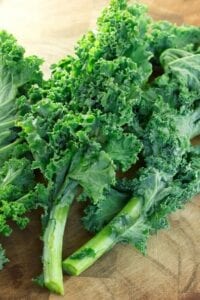
Kale is one of the most nutritious greens available, making it a must-have for health-conscious diets. It belongs to the same family as broccoli, cauliflower, and collard greens. Remarkably, one cup provides 2.9 grams of protein and 329 mg of potassium. In addition, it delivers 134% of the daily value for vitamin C—more than an orange. With these nutrients, kale supports immunity, heart health, and overall wellness.
Growing at Home
For those interested in growing kale at home, two popular varieties are Starbor and Dinosaur Kale. Starbor has finely curled, blue-green leaves and reaches around 16 inches tall. It thrives in cool weather, tolerates light frost, and should be harvested while the leaves are tender.
Meanwhile, the Dinosaur variety offers large, bluish-green leaves with a pebbly texture. Its mild flavor improves as temperatures drop, making it ideal for fall and winter harvests. Both varieties grow well in full to part sun, making them perfect for backyard gardens, container planting, or raised beds.
Easy Recipes to Try
Kale is versatile in the kitchen and can transform everyday meals. One popular option is kale chips: brush leaves lightly with olive oil, season as desired, and bake at 350°F for 10–15 minutes. In addition, other spices such as garlic, onion powder, or mesquite BBQ seasoning provide bold alternatives that enhance flavor without overpowering the greens.
Beyond chips, kale works beautifully in smoothies, salads, soups, and stir-fries. Moreover, pairing it with sweet fruits, tangy dressings, or healthy fats like avocado increases both taste and nutrient absorption. Exploring different recipes ensures that kale becomes a staple in your diet while maximizing its health benefits.
Tips for Healthy, Flavorful Kale
To retain nutrients, avoid overcooking. Lightly steaming or sautéing helps preserve vitamins and minerals. Additionally, combining kale with olive oil or avocado enhances absorption of fat-soluble nutrients. Regularly including kale in meals not only adds vibrant color and flavor but also provides a substantial boost of essential vitamins and minerals.
By growing kale at home and experimenting with simple recipes, anyone can enjoy fresh, nutritious greens throughout the season while adding variety to daily meals.
Additional Information:
How to Start a Vegetable Garden
SHOP Gardening Accessories
